Decoding Pablo Picasso
Pablo Picasso is one of the most important figures of the 20th century, in terms of art and art movements that occurred over this period. Pablo Picasso was born in Malaga, Spain in 1881 to Don Jose Ruiz y Blasco and Maria Picasso y Lopez. He was raised there before going on the spend most of his adult life working in France. His father was a painter and a professor of art. At the age of seven, Picasso begin receiving formal training from his father. During his career he has created over 20,000 paintings, drawings, sculptures, ceramics.
He was an innovator who was also responsible for co-founding the entire Cubist movement alongside George Braque. Cubism was an avant garde art movement that changed the face of European painting and sculpture while affecting contemporary architecture, music and literature.
After World War I (1914–18), Picasso reverted to traditional styles, experimenting less with Cubism. In the early 1920s, he devised a unique variant of classicism using mythological images such as centaurs, minotaurs, nymphs, and fauns inspired by the classical world of Italy. Within this renewed expression, referred to as his Neoclassical Period, he created pictures dedicated to motherhood inspired by the birth of his son Paulo in 1921. Woman in White of 1923 shows a woman clothed in a classic, toga-like, white dress resting calmly in a contemplative pose with tousled hair, eliciting a tender lyricism and calming spirit of maternity. Toward the end of the 1920s, Picasso drew on Surrealist imagery and techniques to make pictures of morphed and distorted figures. In Nude Standing by the Sea of 1929, Picasso’s figure recounts the classical pose of a standing nude with her arms upraised, but her body is swollen and monstrously rearranged.
In the early 1930s, Picasso had turned to harmonious colors and sinuous contours that evoke an overall biomorphic sensuality. He painted scenes of women with drooping heads and striking voluptuousness with a renewed sense of optimism and liberty, probably inspired by his affair with a young woman named Marie-Thérèse Walter (1909–1977). Reading at a Table from 1934 uses these expressive qualities of bold colors and gentle curves to portray Marie-Thérèse seated at an oversized table, emphasizing her youth and innocence.
From the late 1940s through the 1960s, Picasso’s creative energy never waned. He was living in the south of France, were he continued to paint, make ceramics, and experiment with printmaking. His international fame increased with large exhibitions in London, Venice, and Paris, as well as retrospectives in Tokyo in 1951, and Lyon, Rome, Milan, and São Paulo in 1953. A retrospective in New York at the Museum of Modern Art in 1957 garnered a massive amount of attention, with over 100,000 visitors during the first month.
Picasso died at age 91 in 1973, where he had become one of the most famous and successful artist throughout history. No one has achieved the same degree of widespread fame or displayed such incredible versatility as Pablo Picasso has in art history. His free spirit and eccentric style has disregard him for what others thought of his work and creative style made him a catalyst for artists to follow. As a father of modern art, Picasso’s originality touched every major artist and art movement that followed in his wake.
”The purpose of art is washing the dust of daily life off our souls.”
– Pablo Picasso
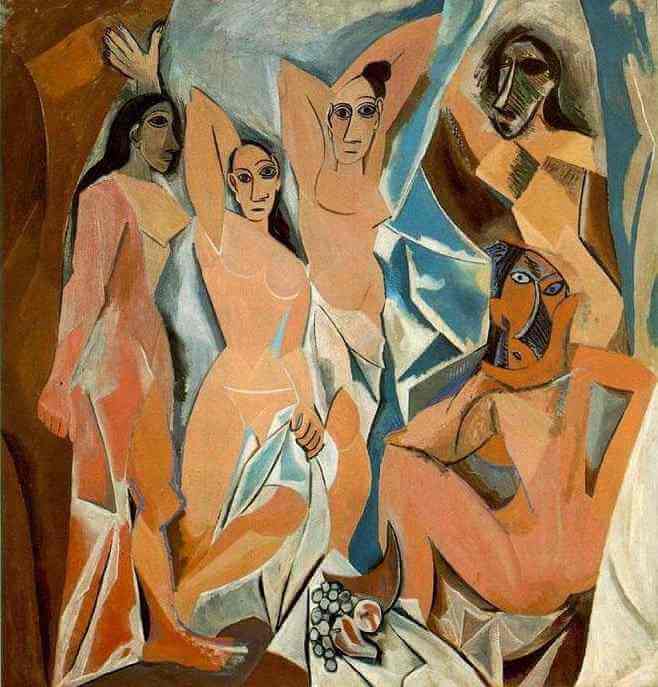
Les Demoiselles d’Avignon, 1907
Les Demoiselles d’Avignon, was painted in 1907 and is the most famous example of cubism painting. In this painting, Picasso abandoned all known form and representation of traditional art. He used distortion of female’s body and geometric forms in an innovative way, which challenge the expectation that paintings will offer idealized representations of female beauty. It also shows the influence of African art on Picasso.
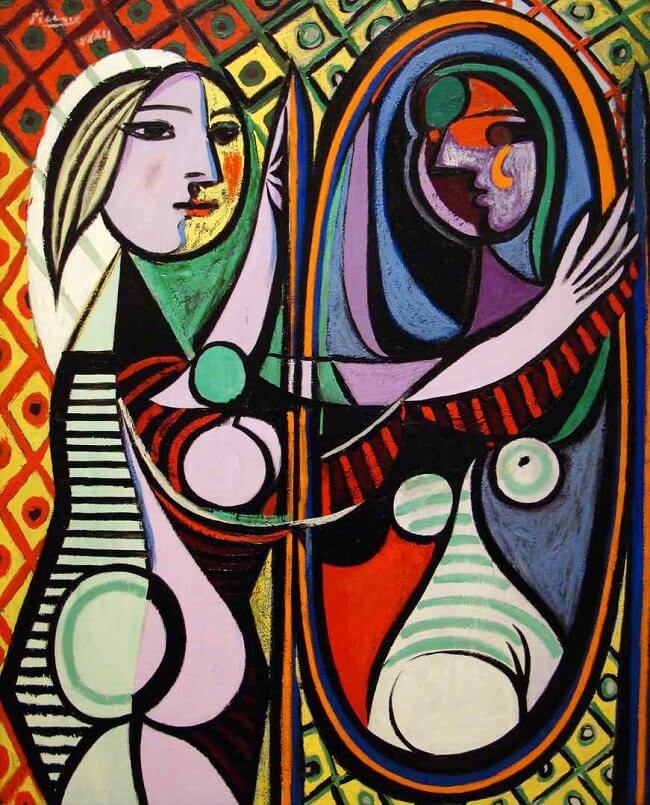
Girl Before A Mirror, 1932
Girl Before Mirror was painted in March 1932. It was produced in the style Picasso was using at the time and evoked an image of Vanity such as had been utilized in art in earlier eras, though Picasso shifts the emphasis and creates a very different view of the image. The work is considered in terms of the erotic in Picasso’s art, and critics in different periods have offered their assessments of the work to show a wide range of reactions.
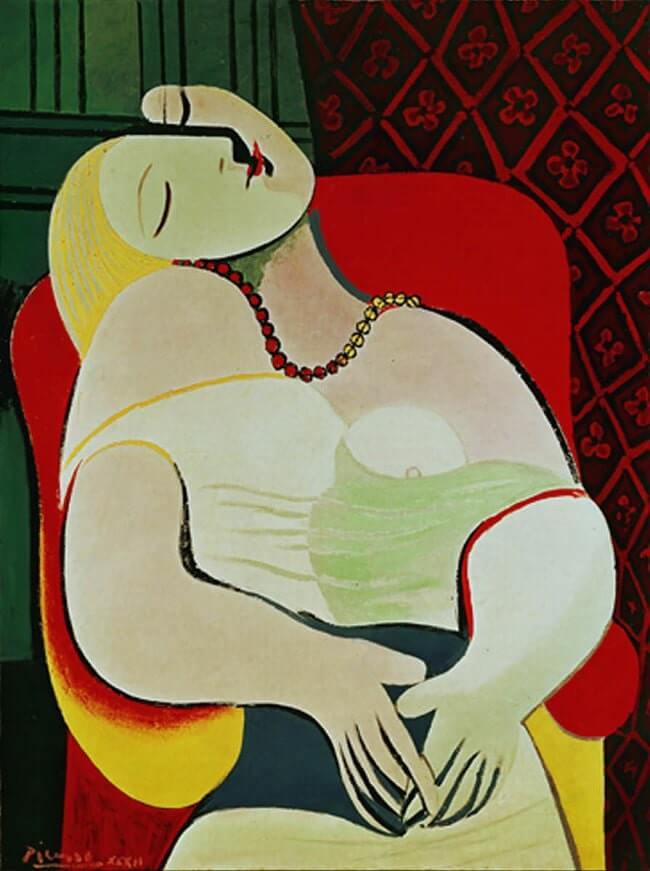
The Dream, 1932
Le Rêve (The Dream) is a 1932 oil painting (130 × 97 cm) by Pablo Picasso, then 50 years old, portraying his 24-year-old mistress Marie-Thérèse Walter. It is said to have been painted in one afternoon, on January 24, 1932. It belongs to Picasso’s period of distorted depictions, with its oversimplified outlines and contrasted colors resembling early Fauvism.
The erotic content of the painting has been noted repeatedly, with critics pointing out that Picasso painted an erect penis, presumably symbolizing his own, in the upturned face of his model.
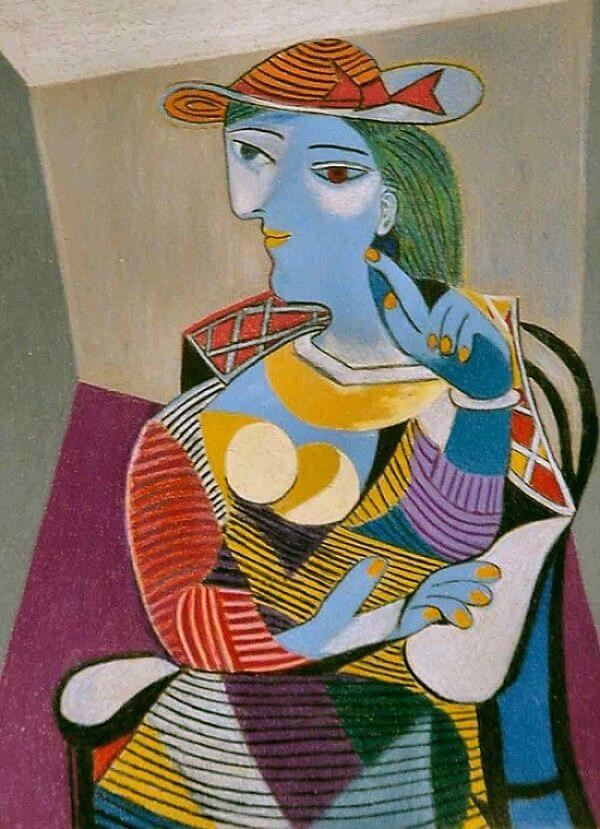
Seated Woman (Marie-Therese),1937
This amazing work was painted at the start of an amazingly prolific year, in which Picasso produced many powerful creations, including Guernica (1937). The influence of his young love and muse had recharged him, and he became a legend in his own lifetime. This painting has a sense of harlequinade, as strong bright bands of color are arranged so that the dress appears like a costume.
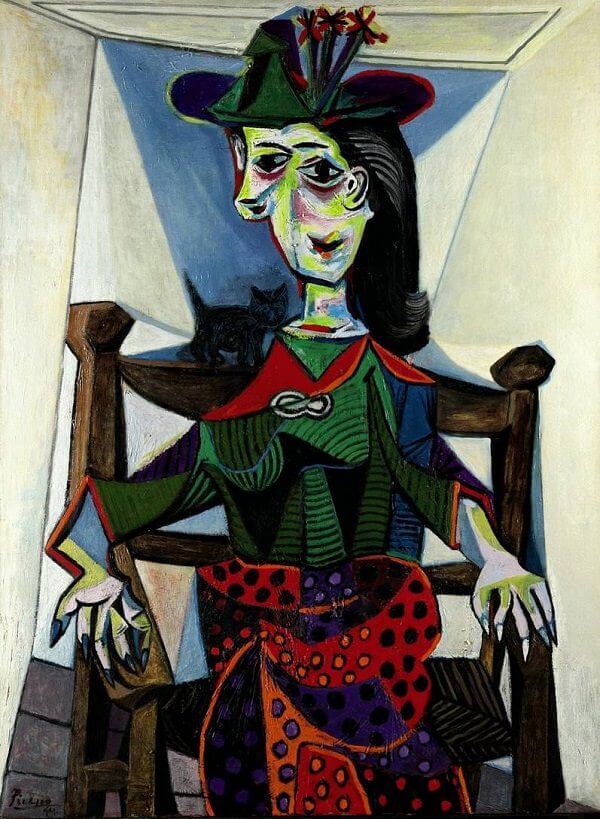
Dora Maar au Chat, 1941
Dora Maar au Chat presents the artist’s most mysterious and challenging mistress regally posed three-quarter length in a large wooden chair with a small black cat perched behind her in both an amusing and menacing attitude. The faceted planes of her body and the richly layered surface of brushstrokes impart a monumental and sculptural quality to this portrait. The painting is also remarkable for its brilliance of color and the complex and dense patterning of the model’s dress.
Dora Maar au Chat is one of Picasso’s most valued depictions of his lover and artistic companion.
Photos Courtesy of Pablo Picasso.org

